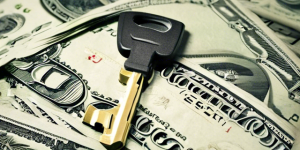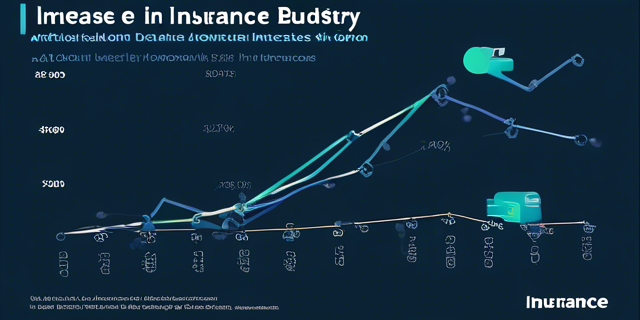How Much is Full Coverage Auto Insurance?

When shopping for car insurance, one of the main decisions drivers have to make is whether to get basic liability coverage or upgrade to full coverage auto insurance. But what does “full coverage” mean and how much more expensive is it compared to minimum state requirements?
Getting quotes from multiple insurance providers is the best way to understand your options and just how much that full protection will cost you. The price can vary dramatically based on factors like your car, age, driving history and location.
Let’s explore everything that goes into full coverage insurance, typical costs compared to state minimums, and tips for locking in the best rate.
Defining Full Coverage Auto Insurance

The term “full coverage” is used loosely in insurance and can mean different things to different people. Legally, the absolute bare minimum coverage required by states is:
- Liability insurance
This covers damage YOU cause to others in an accident that is deemed your fault. Liability insurance is broken out into:
-
- Bodily Injury Liability (covers medical costs of people injured)
-
- Property Damage Liability (covers repair costs for property you damage)
So realistically, liability insurance only protects other people – it does nothing to repair your own car or cover medical bills if you or family members are injured.
Components of True Full Coverage Auto Insurance

That’s why drivers wanting more financial protection choose to add:
- Collision insurance
- Comprehensive insurance
- Uninsured/Underinsured Motorist Coverage
- Medical Payments Coverage
- Personal Injury Protection
When you bundle all of those together, now you truly have “full coverage” guarding yourself in accidents along with other vehicles/drivers.
Let’s overview what each one covers:
Collision Insurance
- Repairs damage to YOUR vehicle after an accident
- Requires you pay a deductible amount first
- Protects against collisions with objects (telephone pole, guardrail) or other vehicles
Comprehensive Insurance
- Repairs YOUR car due to theft, vandalism, weather, fire other non-collision incidents
- Comes with a deductible you pay first
- Protects against tree branch damage, car theft, storm hail, flood etc.
Uninsured/Underinsured Motorist
- Covers injuries to driver and passengers in YOUR vehicle if the other driver causes an accident but lacks sufficient insurance (or any insurance) to pay for your medical bills
Medical Payments Coverage
- Helps pay medical bills for injuries to YOU or your passengers after an accident up to policy limit
- Covers ambulance rides, hospital visits, rehab etc.
- Available regardless of who caused the accident
Personal Injury Protection (PIP)
- Helps pay for immediate medical care, lost wages from missed work due to injuries, funeral costs and other accident-related expenses
- Depending on state regulations, may apply to policyholder, passengers, and household relatives injured in accident
Bundling all those supplemental coverages into your policy creates a comprehensive shield protecting you, your passengers AND your vehicle in the unfortunate case of an accident – even if injuries or damage were caused by an uninsured driver with no insurance at all.
That’s the upside of paying for full coverage. But what’s the typical cost of all this extra protection?
How Much Does Basic Liability Car Insurance Cost?
Since full coverage builds off of liability insurance, you need to know typical costs of just meeting state minimum first.
Average nationwide liability premiums fall around $600 per year but can run as low as $300 or as high as $1,100 depending on driver demographics and location.
Here is more detail on average liability premiums across profiles:
| Driver Category | Avg Yearly Premium |
|---|---|
| Teenage Male | $2000+ |
| Teenage Female | $1800+ |
| 20-Year Male | $1500+ |
| 20-Year Female | $1300+ |
| 40-Year Male | $700 |
| 40-Year Female | $650 |
| Senior Male | $900+ |
| Senior Female | $850+ |
Rates for teenage and senior drivers tend to run higher because insurance sees them as riskier behind the wheel. Premiums are also cheapest generally for middle age females given lower historical accident rates.
Location causes big variability too – Detroit for example averages over $5000 per year due to high frequency of claims!
The key point is liability forms the baseline cost of insurance in a given state. Anything beyond that has additional premium charges tacked on top.
How Much Does Full Coverage Car Insurance Cost?
The true cost of full coverage insurance combines:
- Base liability rates
- Premium charges for additional protections bundled like collision, comprehensive, medical payments etc.
- Deductibles amounts you select
On average, buying full coverage can add anywhere from 50-100% on top of base liability rates.
However, total cost greatly depends on the car itself and coverages picked.
For example:
- Full coverage for a 15 year old used economy sedan worth $2000 might add only $20-30 per month to baseline liability ($250 more per year)
- Full coverage for a brand new $60k luxury SUV could add $150+ per month ($1800+ more per year ontop of liability)
Newer cars that are financed usually require drivers carry collision/comprehensive. But older paid off vehicles can sometimes skip those if you would rather pocket savings vs protect declining asset value. Auto lenders also stipulate maximum deductibles to avoid too much out of pocket risk.
Average Annual Full Coverage Costs
Typical ranges by major demographics:
| Category | Yearly Premium |
|---|---|
| Teenage Male | $4000+ |
| Teenage Female | $3200+ |
| 20-Something Male | $2000-$3000 |
| 20-Something Female | $1600-$2200 |
| Middle-Age Male | $1200-$1700 |
| Middle-Age Female | $1000-$1500 |
| Senior Male | $1600+ |
| Senior Female | $1400+ |
But averages only say so much. Actual quotes you receive depend heavily on:
- Driving Record
- Credit History
- Location
- Annual Mileage
- Make/Model of Vehicle
- Level of Deductibles
- Insurer Competition in Region
Now let’s overview how some of those factors impact premium costs.
What Affects the Cost of Full Coverage Car Insurance?
Beyond baseline rates that insurers calculate based on average expected claims costs given your age, gender and location – your specific risk profile also gets weighed.
Insurers will assess and charge premium based on:
Driving & Accident History
- Number of past at-fault accidents
- Number of driving violations (speeding tickets, DUIs etc)
- Length of time with a valid license
- Consistency insuring a vehicle
The riskier your history behind the wheel, the more costly it will be to get full coverage protection. Too many accidents or crazy violations can even get you denied coverage outright by pickier insurance companies.
Vehicle Driven
Auto insurers assign a “class code” to every vehicle make and model which helps determine premiums based on:
- Repair costs – Parts/labor rates for luxury brands or specialized vehicles? Foreign vs domestic parts pricing
- Vehicle Size – Small economy cars cause less damage in collisions so cheaper to insure
- Theft Rates – Certain vehicles more frequently stolen
- Safety Features – Cars with extra airbags or collision detection and correction tech qualify for discounts from many insurers seeking to incentivize driving innovations that cut future claims.
So all other things being equal, insuring a big luxury SUV costs more than a compact sedan given differences in potential damage payouts and repair bills.
Coverage Amounts & Deductibles
Obviously the higher the value of property damage and injury liability coverage you want, the more premium charged.
Many states only require 25/50/25 minimums:
- $25,000 bodily injury per person
- $50,000 bodily injury per accident
- $25,000 property damage
Bumping those up substantially to guard assets will raise costs. Similarly the lower deductibles you select, the smaller your out of pocket risk but higher the monthly premium. There are always tradeoff calculations around risk versus premium outlay.
Credit History
Insurers often peek at credit reports assuming it broadly correlates with responsibleness and likelihood of filing claims. Depending on state law, having poor credit can provoke increases of 5-50% on premiums over someone with excellent credit!
Location, Location, Location!
Your risk exposure per mile driven can vary enormously between dense urban environments and lower population rural areas. Degree of traffic, accident rates, potential for theft/vandalism, disaster risks like flood zones or hail probability all feed into geographic-based calculations on premiums.
California peculiarly has more expensive average car insurance rates due to varied climate risks, congestion levels and a generally litigious culture quick to sue. Moving states can really shake up your insurance costs even holding other factors equal.
Discounts to Slice Full Coverage Costs
The good news is most insurers offer an array of discounts that can directly reduce your premiums. For full coverage policies, common current discounts include:
- Multi-Policy (Hold home/life policies with same insurer)
- Good Driver
- Accident Forgiveness (1st one’s free basically)
- Newer Vehicle
- Safety Features (airbags, anti-theft etc)
- Mileage Restrictions (only commute “X” miles per year)
- Package Bundling (home+auto together for example)
Savings from discounts can range from 5-40% off total bill depending on how many you can stack together. Definitely inquire what combo specials any carrier may currently be running when shopping rates.
How Can I Get the Cheapest Full Coverage Auto Insurance?
While everyone’s risk profile, vehicle situation and location creates a different formula – the cheapest full coverage insurance policies all have some commonalities:
- Shop insurance quotes frequently instead of sticking with one company forever. Loyalty rarely pays off these days.
- Ask what discounts might be available and qualify for the most you can. Discounts are basically found money off your bill.
- Opt for higher deductibles once cash reserves allow it to offset premium spikes
- Limit annual mileage restrictions if possible (work from home or early retirement helps!)
- Pay premiums upfront in 6 month installments for lower rates
- See if belonging to certain alumni networks, associations, employers etc has any group discount partnerships
- Always maintain excellent driving record and credit history without exceptions
- Provide strict covered driver limitations on policy for teenage/young adult access
The goal is stacking every little lever you can to yield discounts while keeping risk profile clean as possible. The days of affordable full protection while being reckless on roads or financially are fading thanks to modern data tracking and predictive analytics!
Bundling Home & Auto for More Full Coverage Savings
Another popular way to secure a lower premium is by combining auto insurance with homeowner’s or renter’s insurance through the same provider. This bundled packaging then qualifies you for a nice multi-policy discount.
Average savings achieved from bundling averages around 15-20% in total across both policies.
Some insurance carriers even require you bundle home & auto insurance together to access certain elite plans and deeper savings. For financially responsible households already needing both policies, bundling allows improving protection breadth while spending less overall.
Just be careful that convenience of a single bill doesn’t distract from comparing bundled rates against what mixing and matching separate home/auto carriers would cost. Bundle deals can have illusion of savings if not also shopping ala carte rates individually.
Why Drivers Choose Minimal Liability Insurance Over Full Coverage
Given the advantages of full protection in accidents, why do drivers skimp and stick with just liability insurance meeting their state minimum requirements?
There are a few common situations causing people to skip comprehensive coverage extras:
Cost & Budget Limitations
For lower income brackets, the significant premium hike even going from basic liability to full coverage breaks the bank. Families sometimes have to choose housing expenses and keeping food on table over ideal insurance – it gives them something just in case while allowing survival.
No Car Loan Requirement
Drivers who fully own older vehicles with no monthly payment often choose to bank the extra cash versus paying to protect rapidly depreciating asset value. If the vehicle itself gets totaled or stolen, affordable repairs or replacement is less of a financial crisis than missing rent or healthcare.
Short Term Car Needs
Someone that buys an old used car just needing transportation briefly while saving up for a nicer vehicle later often will minimize sinking big insurance dollars into a short term beater. Liability risks are still protected while avoiding premiums outpacing vehicle value.
Rural Locations & Storage
For some living very remotely or storing vehicles long term without driving, liability risks are less likely to happen without regular roads exposure. So higher premium costs that accompany full coverage bundles provide less overall utility.
In most driver situations however, the difference between basic liability and full coverage amounts to only $10-30 per month for vastly more financial security. It rarely makes sense to go too bare bones just to save a few bucks upfront. You never know what surprises the road may bring!
How Much Liability Coverage Should You Carry?
A key question when reviewing insurance is just how little is too little in terms of state minimum liability requirements? What coverage limit shortcomings could cripple you financially if found negligent in a major accident?
Liability insurance kicks in to help cover damage and injury costs inflicted on others when an accident is your fault. But state minimums are shockingly low in many regions – as little as $15k per person or $30k per accident.
That would hardly make a dent handling hospital bills and legal costs if your mistake left someone permanently disabled or killed multiple parties!
Many insurance experts suggest bumping your liability insurance minimums to:
- $100k bodily injury per person
- $300k bodily injury per accident
- $100k property damage coverage
The last thing you want is successfully sued for $500k only to have maximum payout capped at $30k leaving you personally on the hook for ruinous six figure balances. Look beyond mere minimums required as liability umbrella needs grow over time alongside assets.
An extra $150-300 per year goes a long way avoiding financially crippling scenarios. Ultimately there is no such thing as too much liability protection given today’s inflated damage costs.
Can’t Afford Both Comprehensive & Collision Insurance?
Facing extremely tight budgets, some need to pick between comprehensive vs collision for additional protection while keeping costs low. Which tends to provide better overall value?
There’s no one size fits all answer – it depends on car value, loan requirements, deductibles and location risk nuances.
But statistically speaking collision claims occur significantly more often than comprehensive claims. That would tilt preference in favor of collision insurance assuming deductible tradeoffs were equal.
Analyze a few years of both coverage costs relative to the asset value of your vehicle. Are premiums getting excessive compared to the actual car worth it’s protecting? Is the vehicle itself more likely to suffer collision harm or non-driving incident harm based on usage and storage factors?
Crunching some quick “value coverage” ratios for both using a few policy quotes and blue book valuations illuminates the better positioned protection given your specific on-road exposures.
Using Insurance Comparison Sites to Find Cheapest Rates
Insurance premiums can wildly fluctuate between carriers today – often hundreds of dollars or more per year even for similar policies! This creates huge money saving opportunities for drivers that use insurance comparison sites to instantly see a multitude of quotes side by side.
Here are some of the best auto insurance comparison websites making that rate shopping research easy:
- TheZebra.com – Exclusive insurance comparison site that profiles policies from over 200 carriers across metrics like customer satisfaction, pricing, coverage etc – great sorting tools!
- EverQuote – Ad supported insurance comparison aggregating rates nationally from over 300 insurance providers – bare bones but efficient
- Gabi – Specialized side by side comparisons tailored to your state, driving history, vehicle and desired protections
- Policy Genius – Insurance and financial advice website with slick compare process for auto, home, disability and life insurance bundled packages
- NerdWallet – General personal finance advice site with car insurance rate data plus reviews of top companies and available discounts to leverage
Each site has their own quoting process and partners. The key is quickly gathering 6-8 quotes from major insurers fighting for your business locally so you see the full spectrum of prices in current market conditions. Happy hunting!
FAQs – Full Coverage Car Insurance Costs
Let’s recap some of the most frequently asked questions around understanding full coverage auto insurance costs:
How much more is full coverage vs basic liability insurance?
- Full coverage costs about 50-100% MORE per year than carrying only state minimum liability protection. Exact premium difference depends heavily on vehicle insured and amount of added protections like collision, comprehensive etc. Budget about $400-1500 in added premium beyond liability baseline.
How much should full coverage insurance be per month?
- For most drivers carrying full protection, total costs usually fall between $100-250 per month depending on age, driving history, car and deductibles selected. High risk younger drivers can easily pay $300+ per month while older good drivers can lock rates as low as $60-70 per month with ideal history multi-policy discounts.
Can I afford full coverage insurance on minimum wage?
- Paying for truly full auto insurance protection earning only federal minimum wage ($7 per hour, $15k annual) would prove very difficult even on an older paid off vehicle. Drivers in this budget situation often have to compromise down to basic liability requirements unfortunately, unless living somewhere with extensive public transport options reducing road risks









